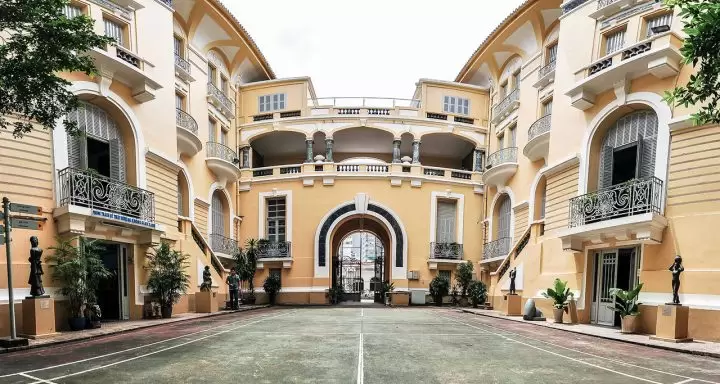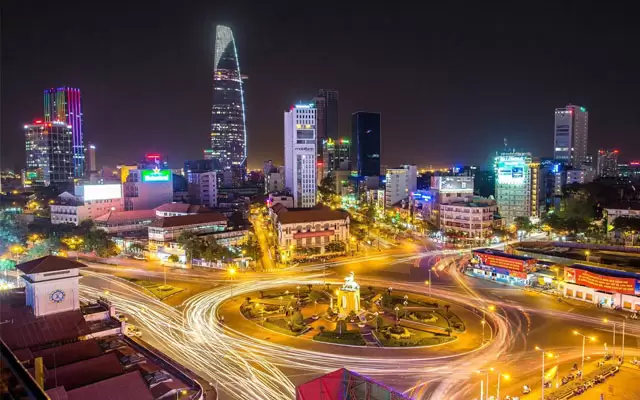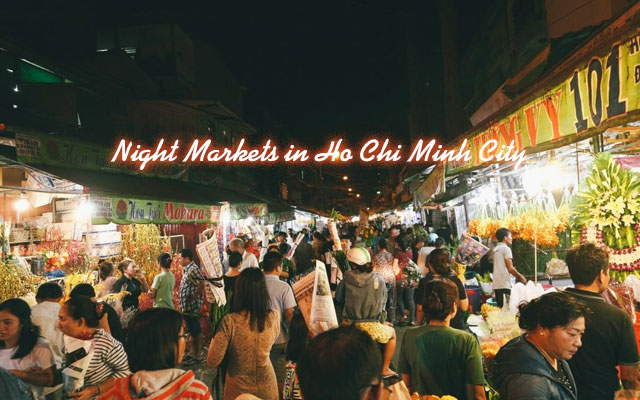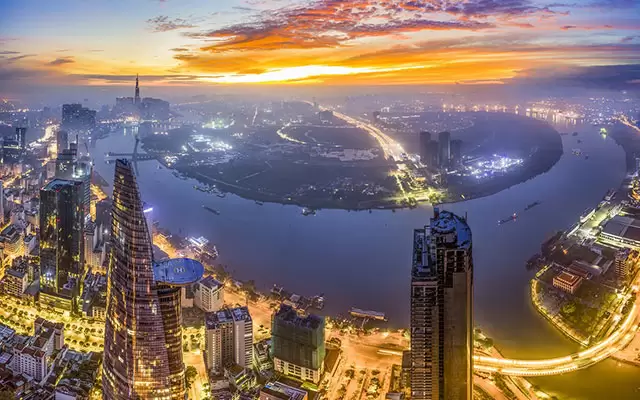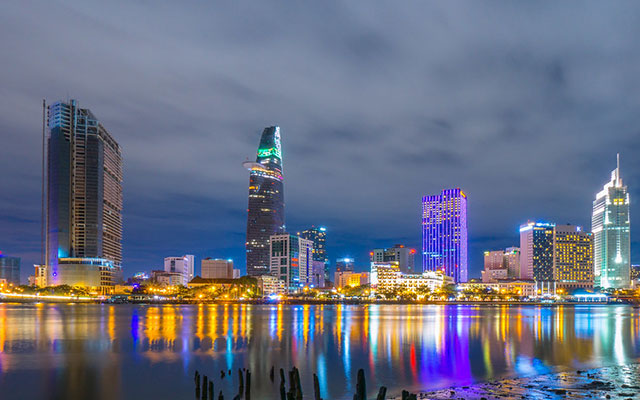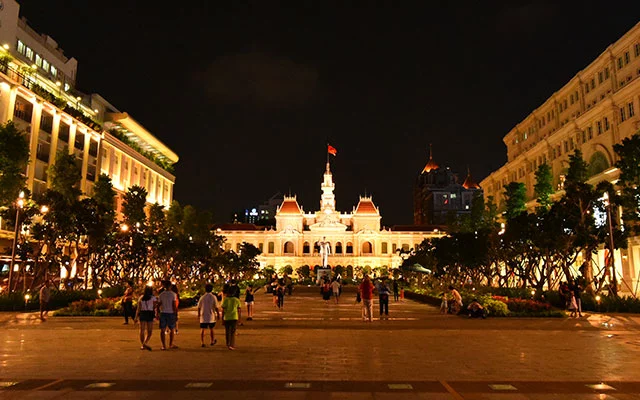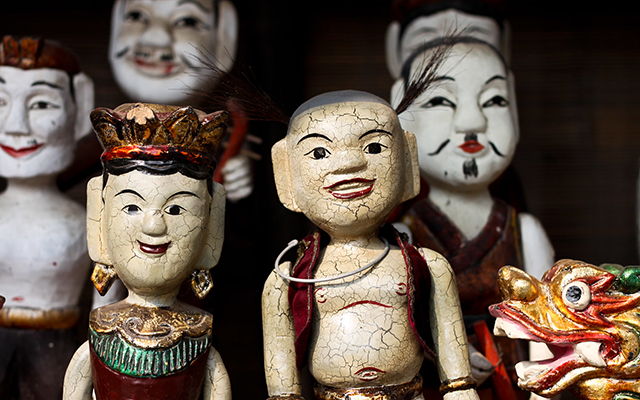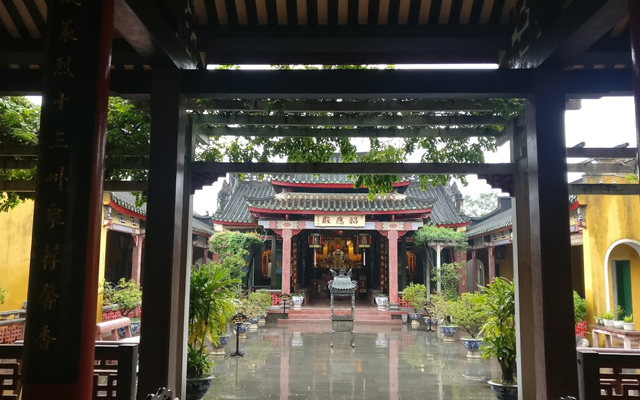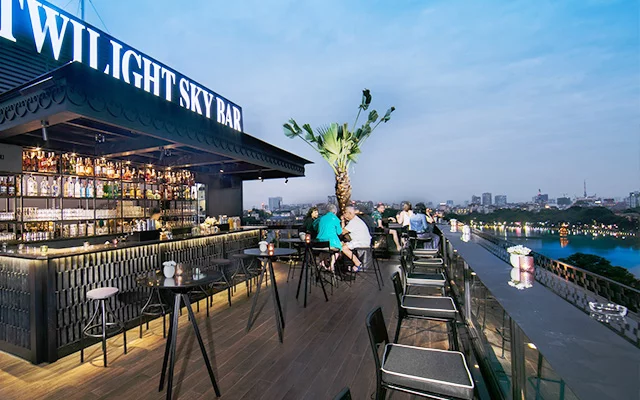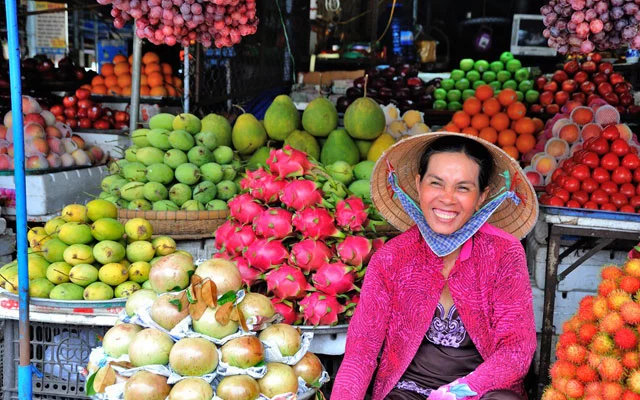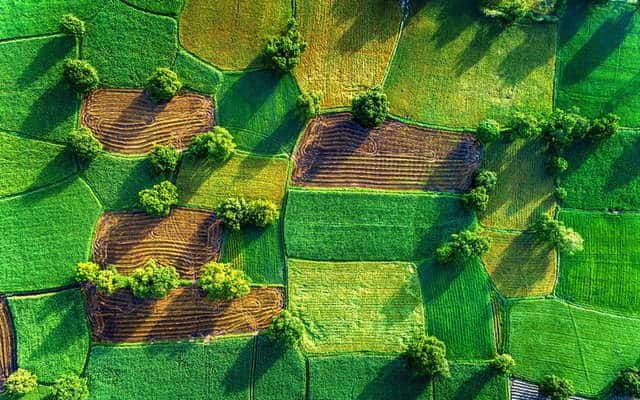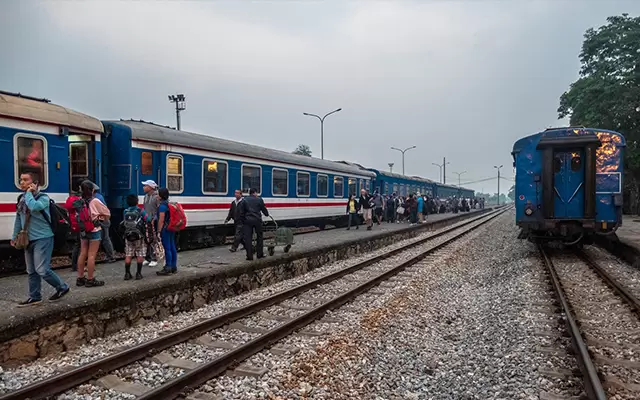12 Most Beautiful French Colonial Architecture Sites in Ho Chi Minh City
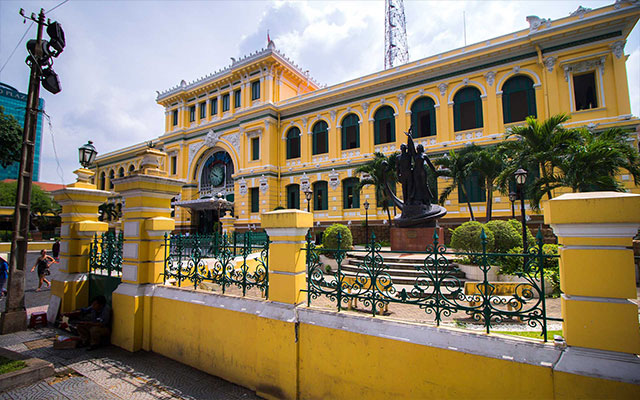
Although it is the most modern city in Vietnam, Saigon – Ho Chi Minh City still retains the ancient, quiet and surprisingly attractive. After more than 300 years of establishment and development, previous Saigon – present Ho Chi Minh City has become a busy commercial center. Through many ups and downs of history, the French immense influence after their colonization in Vietnam from 1884 to 1954 still obviously remains. You can easily see many existing ancient French architectural sites as a gentle silence in modern life of Ho Chi Minh City nowadays. These works have existed for less or over 100 years, becoming famous tourist attractions, appealing tourists to come to see and learn the history of development of the place once known as “Pearl of the Far East”. Here, Vietnam Travel introduces you the Top 12 French Colonial Architecture Sites in Ho Chi Minh City that you should visit whenever you plan a holiday to this must-travel city of the country.
Table of Contents
- 1. Notre Dame Cathedral
- 2. Central Post Office
- 3. Saigon Opera House (Municipal Theatre)
- 4. People’s Committee Building (Saigon City Hall)
- 5. Reunification Palace
- 6. Hotel Continental Saigon
- 7. Ho Chi Minh City Museum of Fine Arts
- 8. Ben Thanh Market
- 9. Hotel Majestic Saigon
- 10. Dragon Wharf – Ho Chi Minh Museum
- 11. Tan Dinh Church
- 12. Phuong Nam Mansion
1. Notre Dame Cathedral
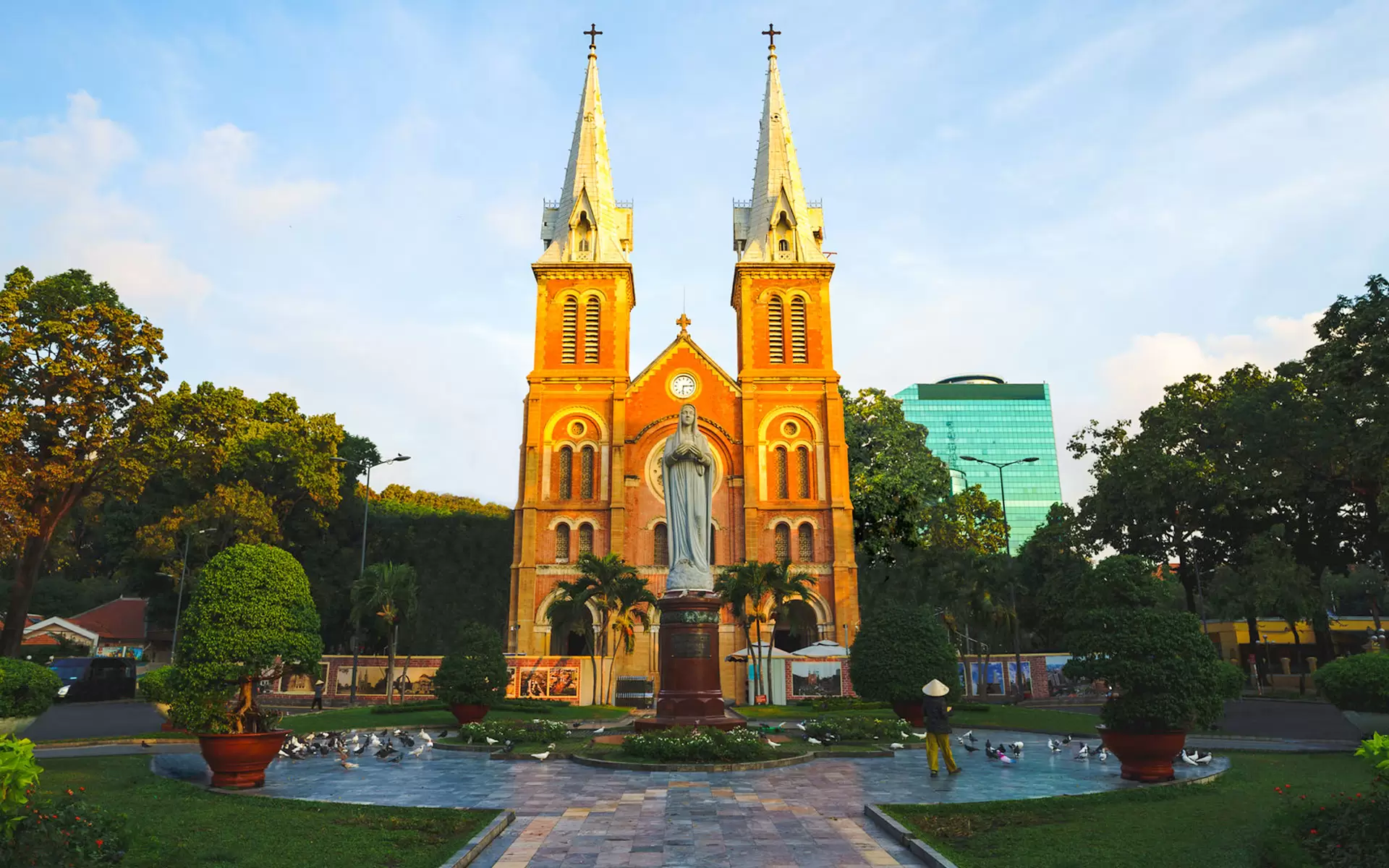
Overview of the Notre Dame Cathedral – one of the unique architectural works in Ho Chi Minh City.
Add: No. 1 Cong Xa Paris Street, District 1, HCM City
Built between 1863 and 1880 by 100% French imported materials, the Notre Dame Cathedral is a superb example of French design which remains an important symbol of the city. Also known as Nha Tho Duc Ba in Vietnamese, it’s the largest church ever built in any of the French colonies.
Designed by architect J. Bourad, the style of Notre Dame Cathedral could be seen with a mix of Gothic and neo-Roman. The church’s brick-like appearance came from the structure which was made with locally quarried granite and then covered with red tiles from Marseilles.
Its two bell towers were 57.6 m high each and had 6 large copper bells. At the top of the tower, there is a crucifix with a height of 3.50m while its overall height from the ground to the top is 60.50m.
Currently, the cathedral was under renovation and nobody was allowed inside. Only the front plaza was still accessible, where one can find a large statue of Mary added in the 1959.
Read more: https://vietnamtravel.com/notre-dame-cathedral-of-saigon-things-to-know/
2. Central Post Office
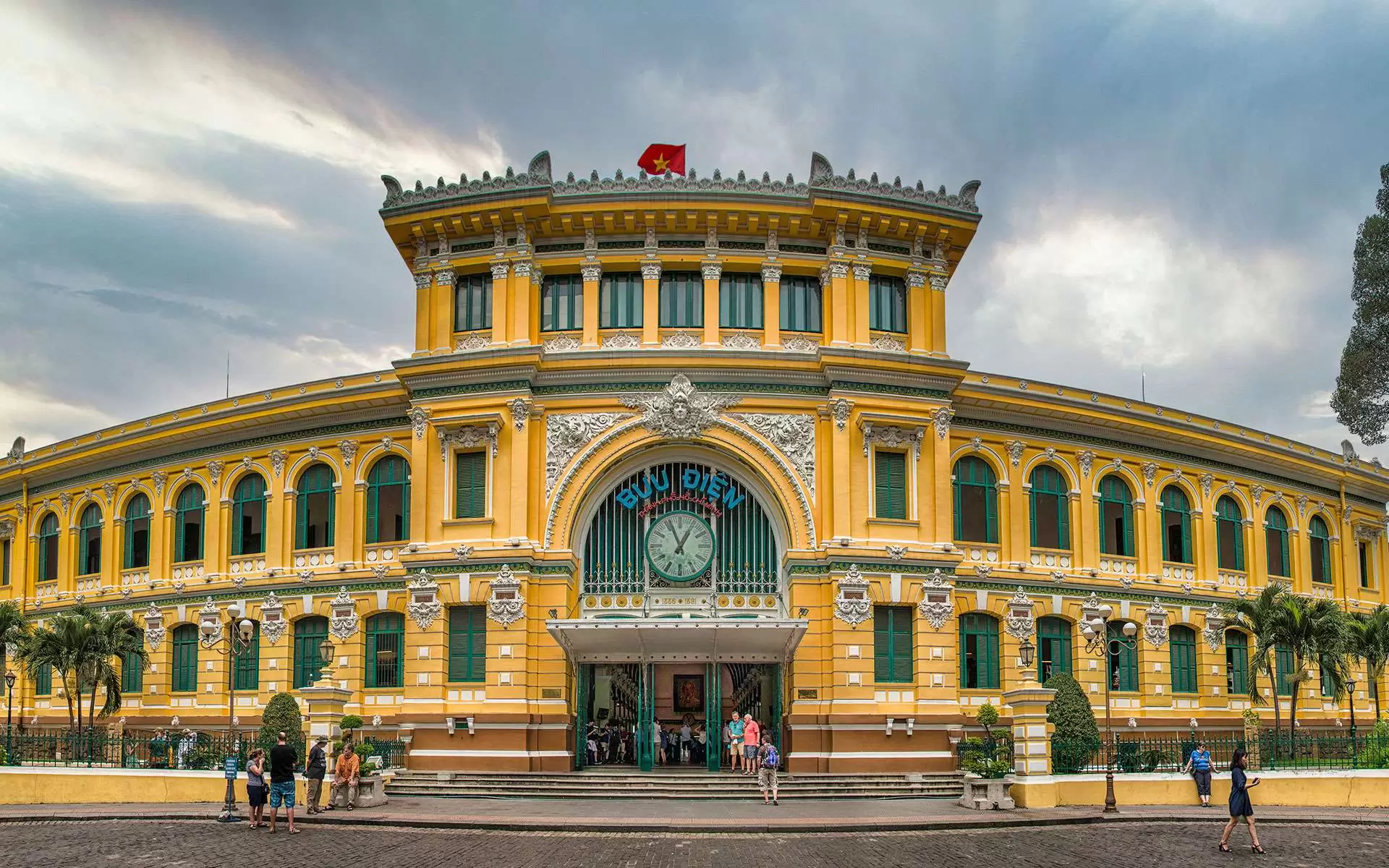
The Central Post Office – grand example of gothic and renaissance influenced architecture.
Add: No. 2 Cong Xa Paris Street, District 1, HCM City
Constructed between 1886 and 1891, the Central Post Office is a grand example of gothic and renaissance influenced architecture. It can be found adjacent to the Notre Dame Cathedral. Sometimes it is credited as the work of Alexandre Gustave Eiffel who are best-known for the world famous Eiffel Tower in Paris, however, it was actually designed by Alfred Foulhoux.
In terms of architecture, this bright yellow building with white trim has arched windows, wooden shutters, looping arches and marble floors reminiscent of the 19th century architectural style. A large clock prominently features at the entrance. Once walking inside, you’ll get to see domed ceilings and metal arches with two large hand painted maps showing old Saigon and the former south-eastern area of Indochina in the early 1900s.
Today it is still a fully functioning post office with helpful English speaking staff, a half of dozen international phone boxes and a range of quirky & reasonably priced souvenirs.
3. Saigon Opera House (Municipal Theatre)
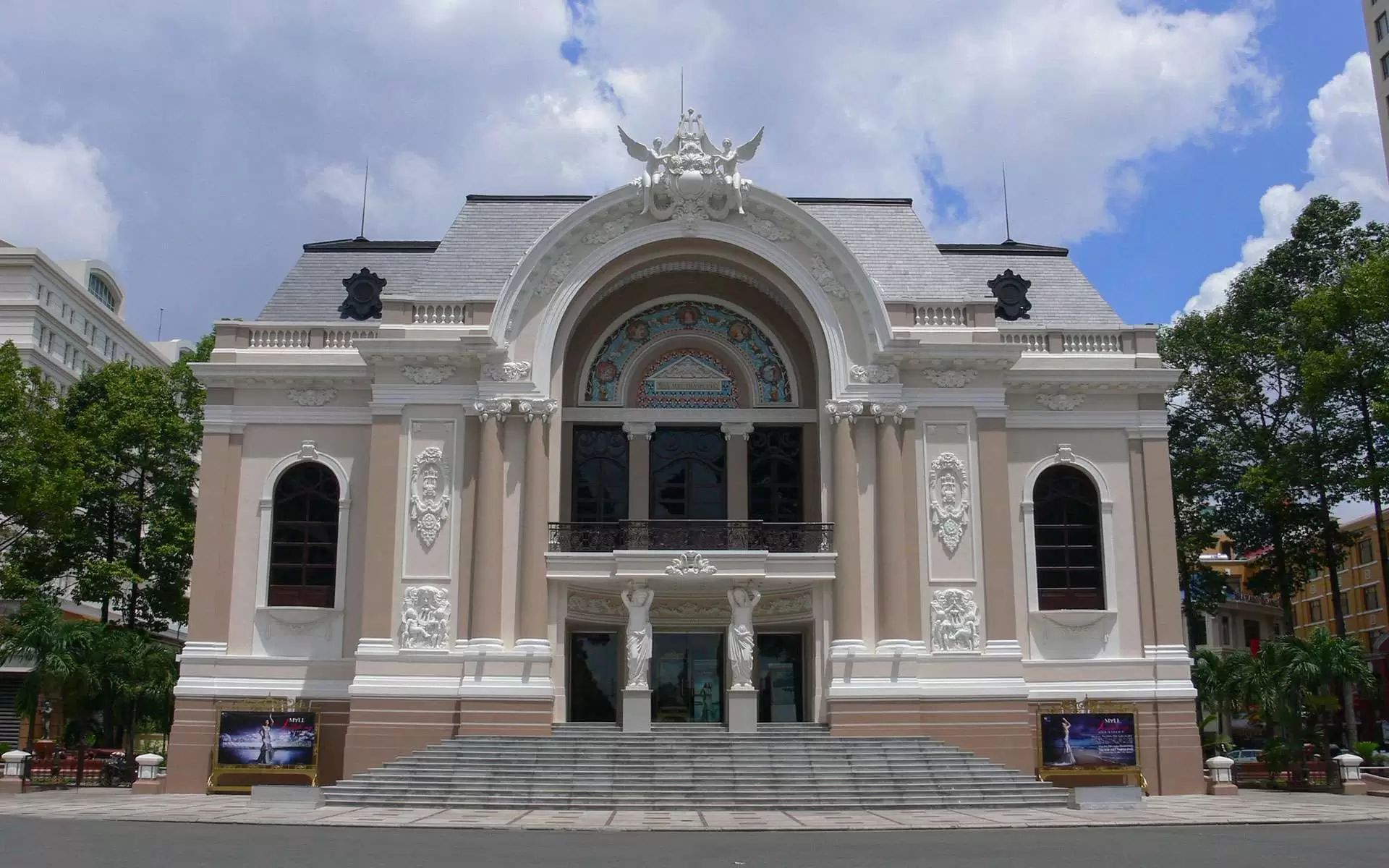
The Municipal Theatre or Saigon Opera House – one of Saigon’s most ornate buildings in modern day.
Add: No. 7 Cong Truong Lam Son Street, District 1, HCM City
Designed by French architect Eugene Ferret, the Municipal Theatre, also referred to locally as the Opera House, is perhaps modern day Saigon’s most ornate buildings. It was built in 1898, and become a counterpart to Hanoi Opera House.
Its feature has a tree-lined boulevard leading up to the entrance reminiscent of European design. There are two seating levels inside that are capable of housing around 800 guests. It was firstly as an entertainment source for French colonists and the middle-class.
Today, Saigon Opera House continues to host performances, most popularly the AO Show that blends Vietnamese elements with the Cirque du Soleil, and only open to the public during such events.
4. People’s Committee Building (Saigon City Hall)
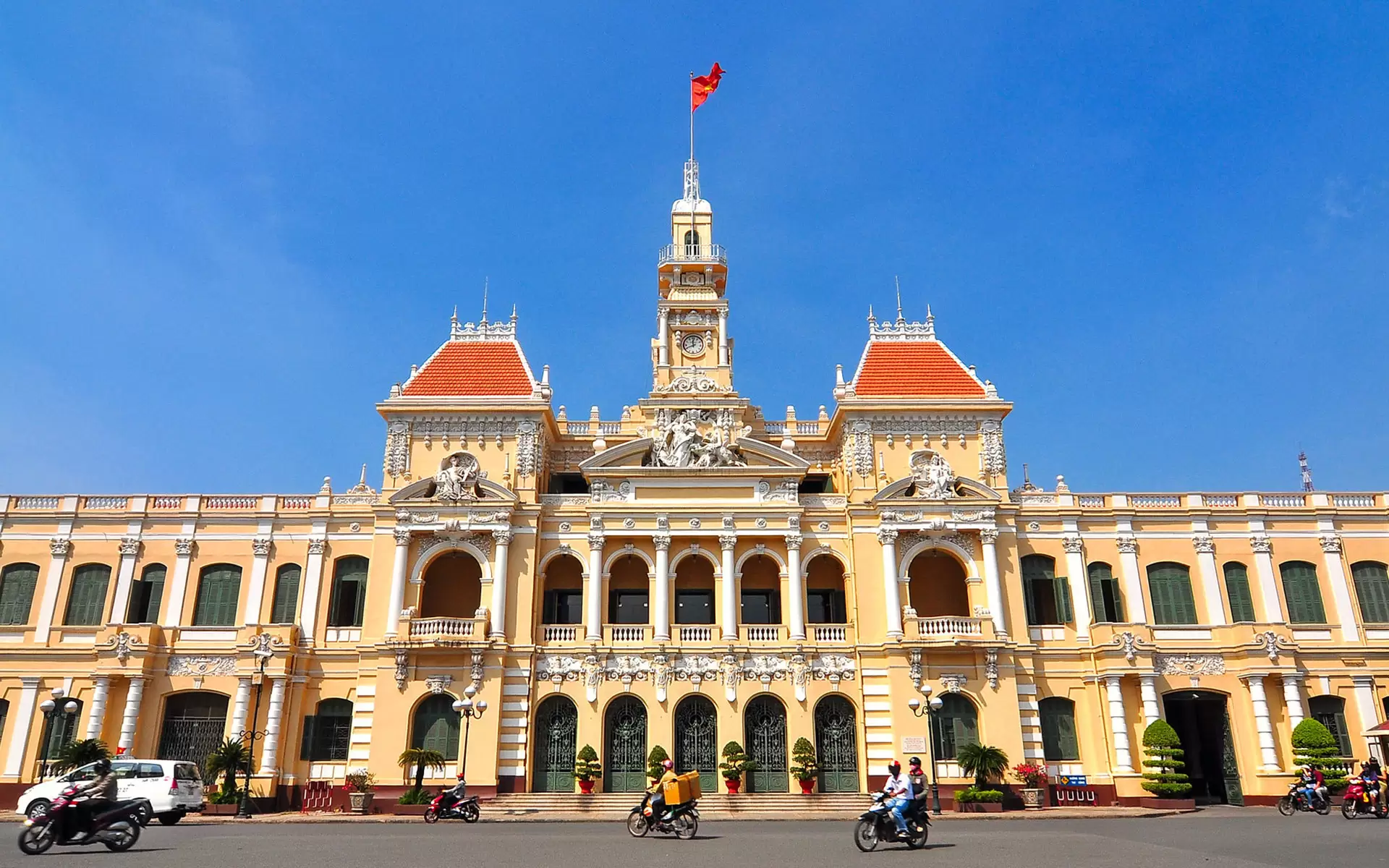
Statue of the greater Ho Chi Minh in front of the People’s Committee building.
Add: 86 Le Thanh Tong Street, District 1, HCM City
Nestled nearby the newly renovated Nguyen Hue Boulevard, the People’s Committee building of Ho Chi Minh City, also referred to as Saigon City Hall, is a true beauty. Built between 1897- 1908 with the design by famous French architect Femand Gardes, the building was modelled after the City Hall building in Paris. It was formerly Hotel de Ville de Saïgon.
The building is symmetric, with the bell tower as the base line and the national flag on its top The left and right side of building have a carving statue of women holding swords while the middle one has a statue of a woman and child. On the walls, the bas-reliefs bring characteristic of French architecture. In front of the building’s small yard, there is a statue of the greater Ho Chi Minh that was constructed in 2015 to commemorate his 125th birthday. When the night falls, this entire building is lit up with LED lights, making it quite a spectacle.
Today, this building is still in use by the officials so remains guarded and off limits for tourists. However, unlike other government buildings in Vietnam, photos of the outside are still allowed.
5. Reunification Palace
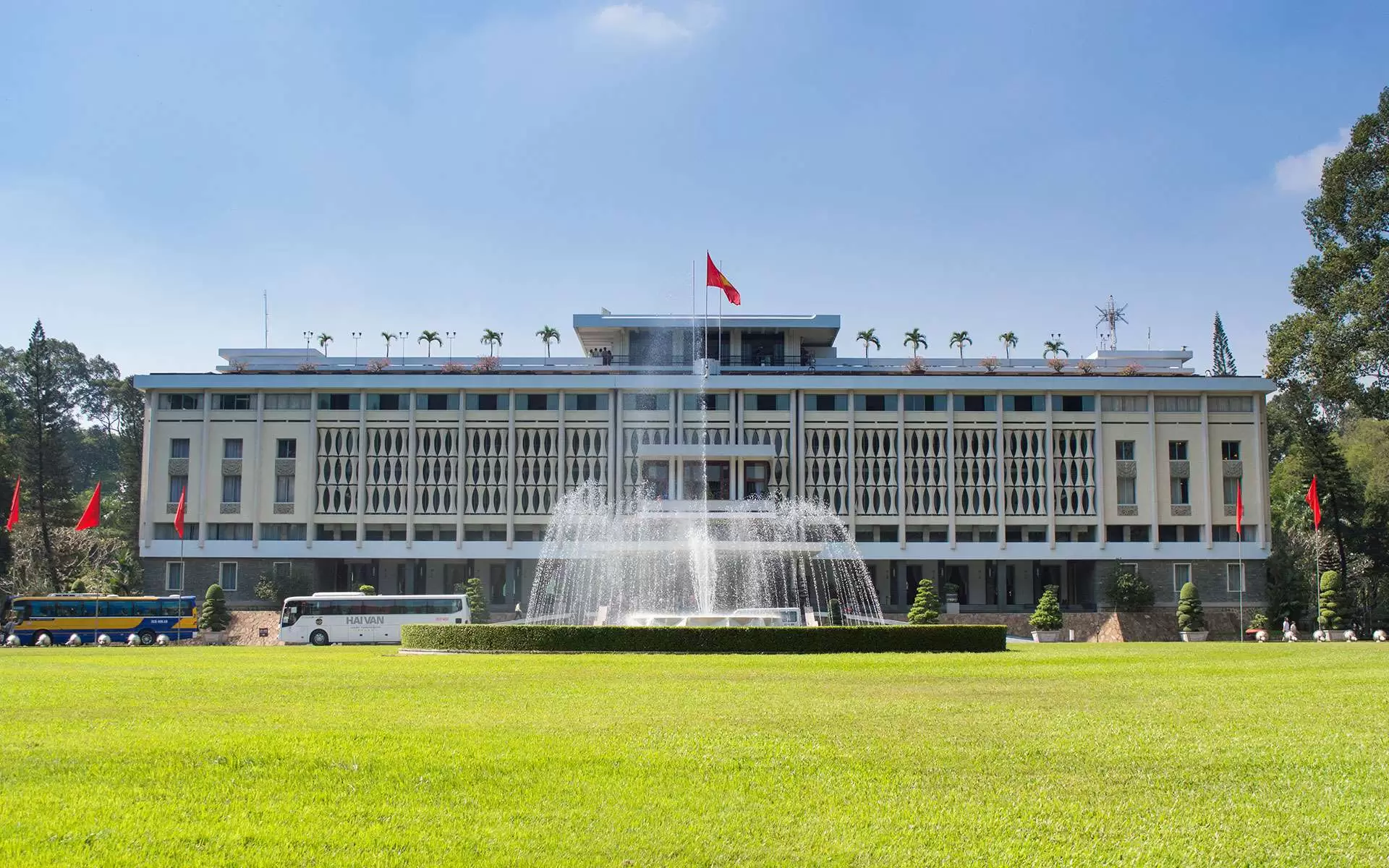
Reunification Palace – a well-preserved museum in Ho Chi Minh City.
Add: 135 Nam Ki Khoi Nghia Street, District 1, HCM City
Reunification Palace, also known as Independence Palace, is a well-preserved museum which offers a glimpse into the lifestyle of South Vietnam’s bureaucratic elite, while also providing plenty of historical info about the war.
According to the authority of Ho Chi Minh City and historians, the name Reunification is for the main meeting-hall inside Independence Palace which is its official name. For years, people have made mistakes between these names.
The palace was firstly built in 1868 by architect Achille-Antoine Hermitte with an area of 12 hectares, including a palace with an 80-meter-wide façade, a guest-chamber capable of accommodating 800 people, and spacious gardens covered by green trees and a lawn. Most of the building materials were imported from France. The construction was only completed by 1871 and named Norodom Palace after the king Norodom of Cambodia (1834–1904).
In 1954, Norodom Palace was handed over to Ngo Dinh Diem – the prime minister of the State of Vietnam. After defeated former Emperor Bao Dai in 1955, Diem declared himself president of the newly proclaimed Republic of Vietnam and renamed the building the Independence Palace.
Being bombed by two rebelled pilots of Diem’s Republic of Vietnam Air Force, the entire left wing of the Palace was destroyed and almost impossible to restore. Therefore, the new Palace was constructed and started in 1962 according to a design by Vietnamese architect – Ngo Viet Thu, but Diem could not stay for a single day before his demise in 1963. Nguyen Van Thieu – 2nd president became the new owner of the Palace for following 12 years, until 30 Apr 1975 when two tanks crashed into the main gate and the exit of the Palace, forcing Nguyen Van Thieu and all members of his Cabinet to surrender. This moment went down in history as one of the greatest and most memorable days of Vietnam, putting a full stop to the colonization of the Americans.
Today, it’s a well-preserved museum which offers a glimpse into the lifestyle of South Vietnam’s bureaucratic elite, while also providing plenty of historical info about the war.
6. Hotel Continental Saigon
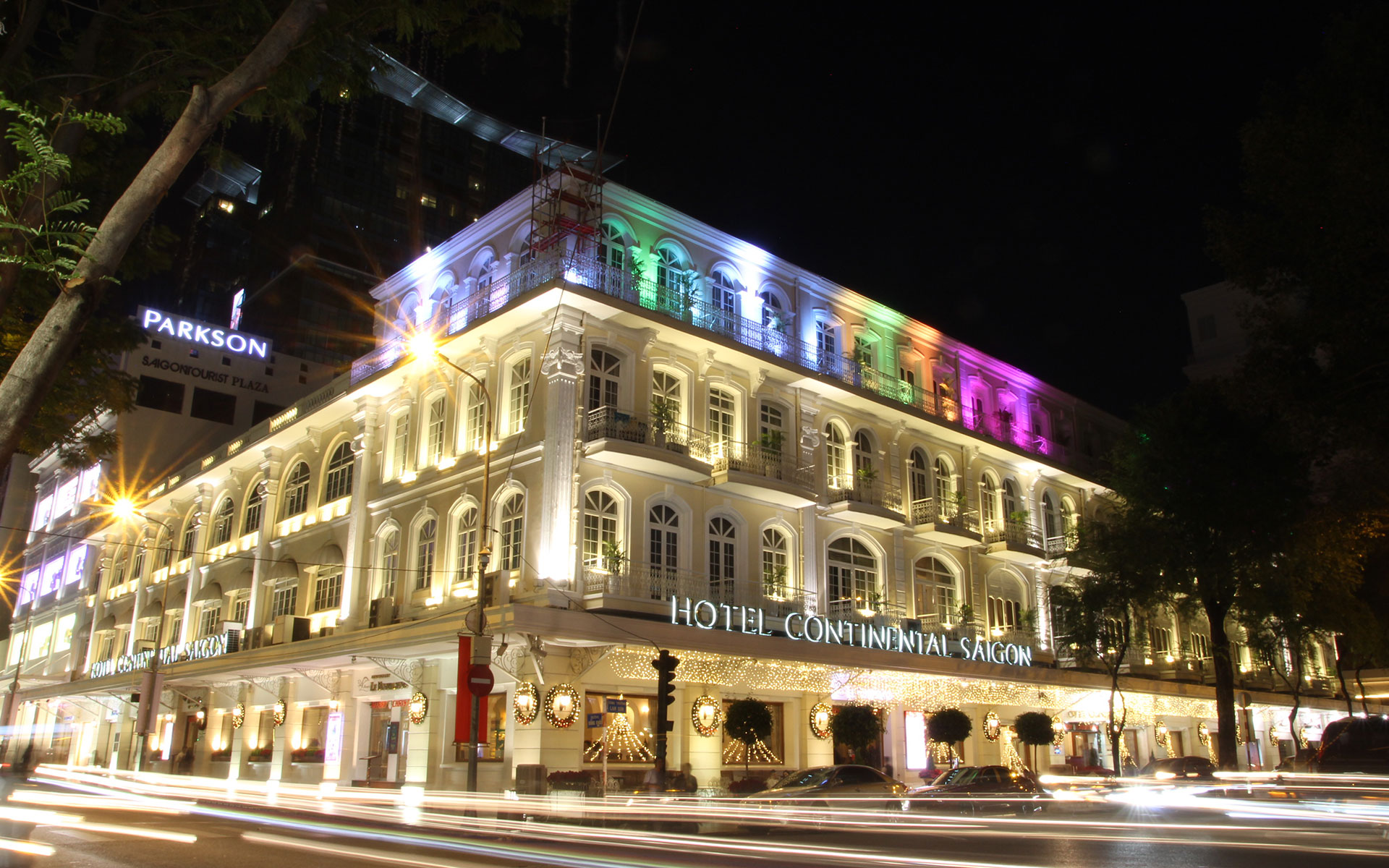
Hotel Continental Saigon
Add: Corner of The Saigon Opera House, Cong Truong Lam Son Street &, Hai Ba Trung Street, District 1, Ho Chi Minh City.
Completed in 1886, the Hotel Continental Saigon is probably the most splendid of the hotels left by the French. During French – Indochina war, a number of celebrities and important writers regularly met here. One of them was Graham Greene, author of the novel “The Quiet American” and the hotel was prominently featured in this book. Located next to the Municipal Theatre, the hotel retains its original shape and charm and becomes the oldest one in the city.
7. Ho Chi Minh City Museum of Fine Arts
Add: 97A Pho Duc Chinh Street, District 1, Ho Chi Minh City
Ho Chi Minh City Museum of Fine Arts is one of the largest museums in Ho Chi Minh City.
The construction was built in 1929 and completed 5 years later in 1934. It was designed by Mr. Rivera, a French architect, featuring a harmonious combination of Asian and European architecture. At first, it was a villa for the Hua (Hui Bon Hoa) family – the wealthiest traders in South Vietnam by that time, and the museum moved there in 1987.
The owners of this construction changed through different periods of time, however, the architectural work still remains its antique appearance and embellishes the general development of Ho Chi Minh City.
Read more: https://vietnamtravel.com/fine-art-museum-of-ho-chi-minh-city/
8. Ben Thanh Market
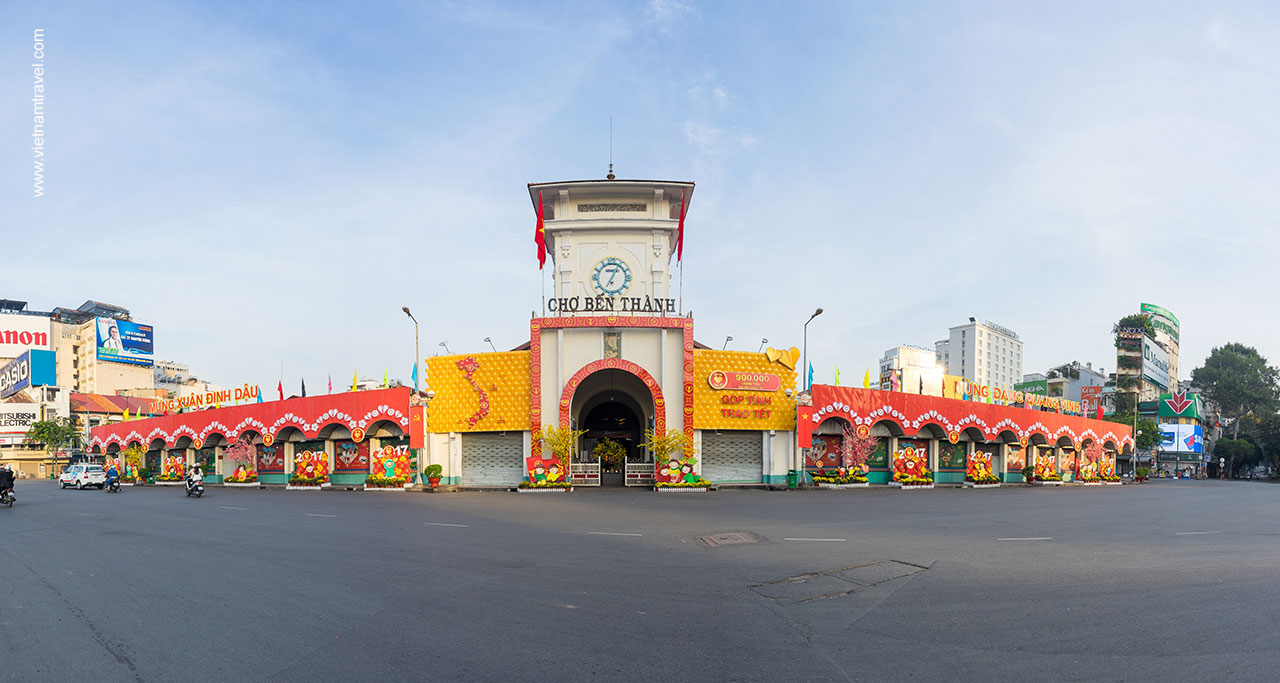
The bustling Ben Thanh Market in the heart of Saigon.
Add: at the intersection of Le Loi, Ham Nghi, Tan Hung and Le Lai Streets, District 1, HCM City
Ben Thanh Market is definitely one of the city’s icons. The market has a history dating back to the early 17th century, with its original as a meeting place for small businesses selling goods on the street near the Ben Thanh River (now it is Saigon River). In 1870, the French colonial government officially named the area Les Halles Centrales (or Central Market). Later in 1912, the market was moved into a new building and renamed as today Ben Thanh Market.
Designed by architects Brossard and Mopin, this Art Deco-style market is surmounted by a vast dome of 28m in diameter, and the main entrance stands out thanks to its large belfry. Its four main doors are giving all-side access to its 10,000 visitors daily. With a space of over 13,000 m², the market houses some 1,500 sellers of textiles, shoes, crafts, food and much more.
Ben Thanh Market is not only interesting in day time, but at night, it can be described as the miniature Saigon, where tourists can fully experience the local life and food culture.
From 6.00pm, two streets at the West and the East gates of Ben Thanh Market are closed for transportation. The night vendors set up their tents and display selling items in the most attractive way to get as much attention from tourists as possible. It is worth for a must-visit.
Read more: https://vietnamtravel.com/quick-guide-to-ben-thanh-market-saigon/
9. Hotel Majestic Saigon
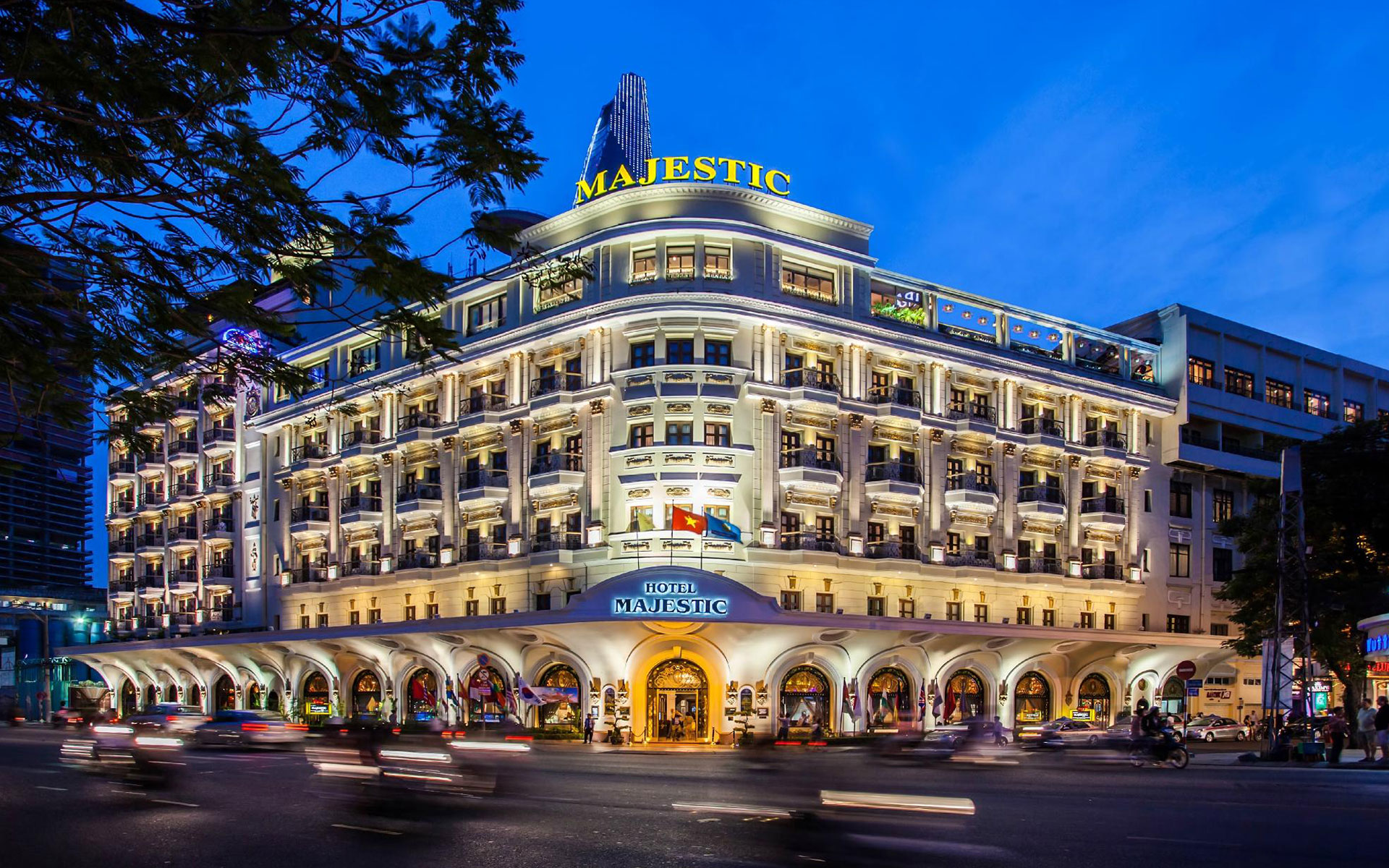
Hotel Majestic Saigon – one of the oldest 5 star hotels in the city.
Add: 1 Dong Khoi Street, District 1, HCM City
Another building by Hui Bon Hoa, the Chinese-born businessman and also designed by the same French architect – Mr. Rivera, are the Hotel Majestic Saigon overlooking the banks of the Saigon River. Built in 1925, undergoing various extensions, the hotel turned into six-storey 5 star masterpiece and as one of the oldest hotels in the city. It also was in one of the river view rooms that Graham Greene wrote his classic novel “The Quiet American”.
The most unique feature of the building is the large arched roof that comes out from the hotel and over the sidewalk. Its gold adornments and individual balconies can be thought as a classic European hotel. Its large arched windows on the ground floor allow a good view (both inside and outside) of the grand lobby and dining area. The roof top bar here is a wonderful flashback to days gone by. Certainly, you can book a room to stay at Hotel Majestic and learn more about this historic French Architecture site!
10. Dragon Wharf – Ho Chi Minh Museum
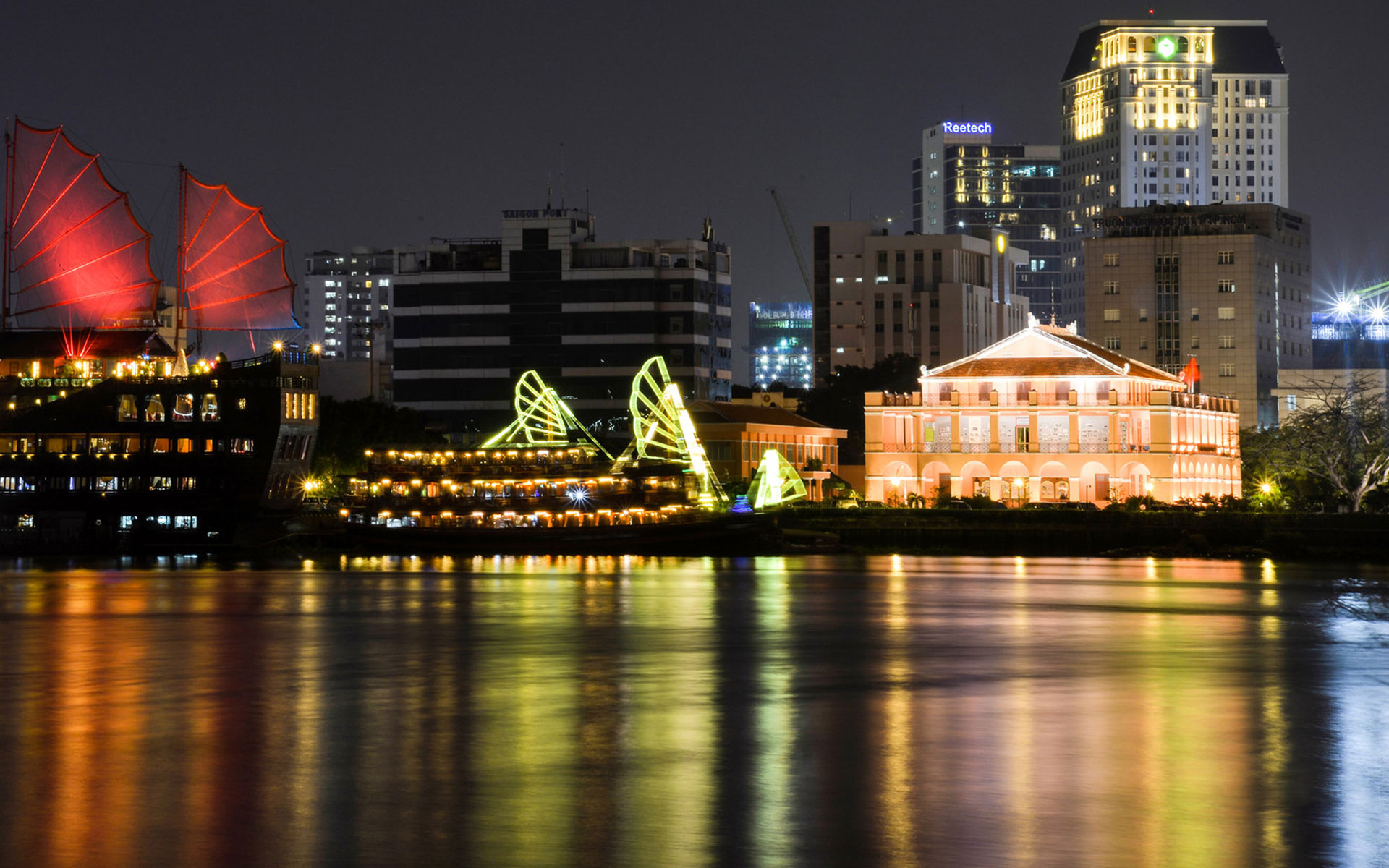
Dragon Wharf – where Ho Chi Minh departed on the French ship for a 30-year journey around the world.
Add: 1 Nguyen Tat Thanh Street, District 4, HCM City
Built between 1862 and 1863 on the Saigon River, the Dragon Wharf was the first commercial port of the city meeting the demand of transportation between the colonized Vietnam and the world.
Its unique architecture combines Vietnamese and French style which is well reflected by the design of a French-style main building. It features 2 Vietnamese dragon-shaped statues on its roof. This detail can be often seen in the architecture of Vietnam’s traditional temples and pagodas, and the wharf name was said to come from this decoration.
From here, on 5 June 1911, Ho Chi Minh (at the time named Nguyen Tat Thanh) at his age of 21 departed on the French ship – Admiral Latouche Treville for a 30-year journey around the world.
For this reason, the place was reconverted in 1979 into a museum housing a rich collection of 3,000 pictures and 700 artifacts relating to President Ho Chi Minh, including his personal belongings and journals as well as many scripts and publications documenting his wondrous life.
11. Tan Dinh Church
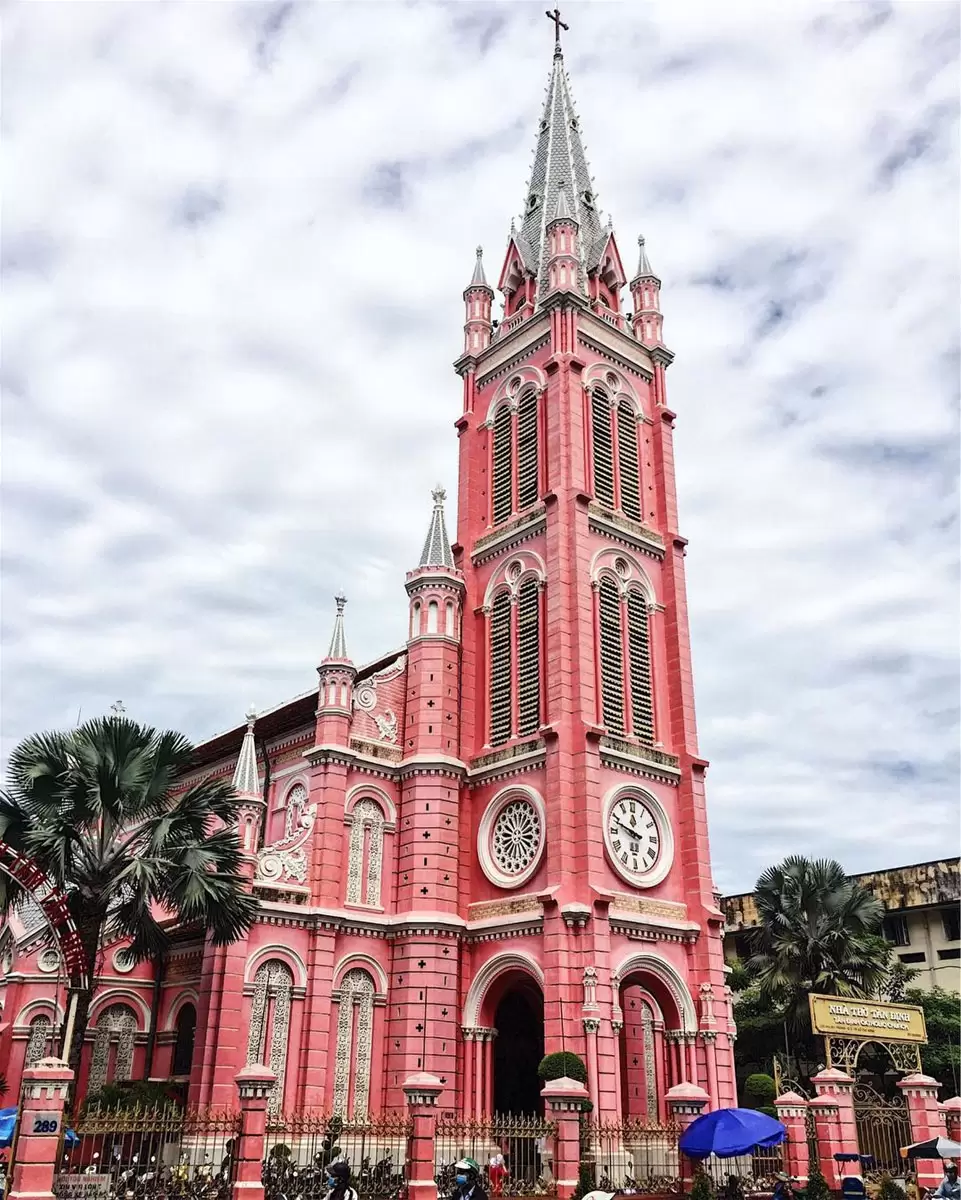
Tan Dinh Church – the 2nd largest church in the city, after the Notre Dame Cathedral.
Add: 289 Hai Ba Trung Street, District 3, HCM City
Nestled next to the Tan Dinh market in District 3, Tan Dinh Church is the 2nd largest church in the city, after Notre Dame Cathedral and belongs to the Roman Catholic Archdiocese of Ho Chi Minh City. It is known for the mix of Gothic and Renaissance elements. Over 60m high, the church has two bell towers and three beautifully carved Italian marble altars donated in 1929.
In 1976, it underwent the renovations on its 100th anniversary. Its eye-catching pink colour becomes prominent point to attract visitors to come and visit.
12. Phuong Nam Mansion
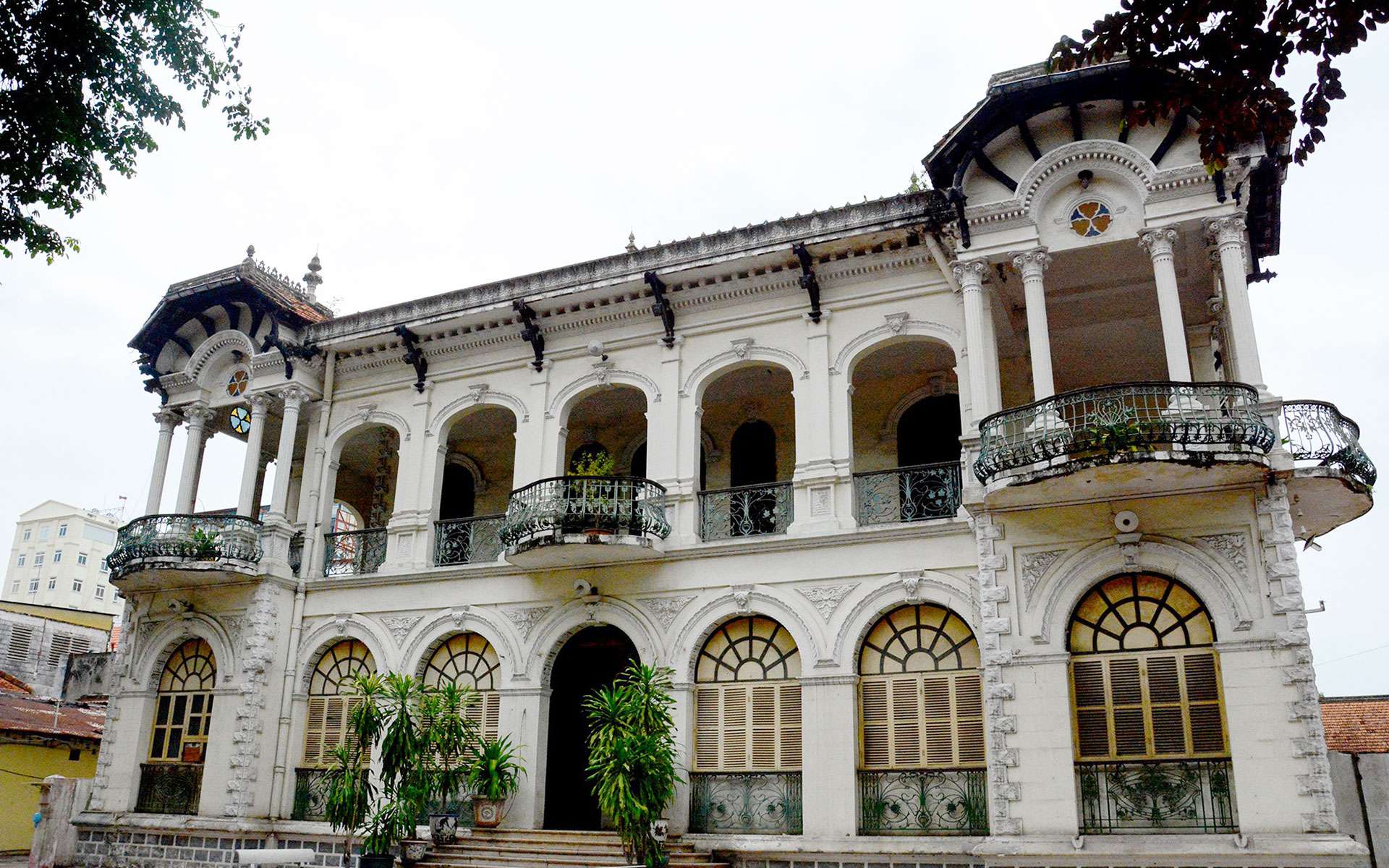
Phuong Nam Mansion – the very luxurious French style and still keep its mystery inside.
Add: 110-112 Vo Van Tan Street, District 3, Ho Chi Minh City
Also located in District 3, Phuong Nam Mansion, a site of 2,800m², is less known of a privately owned colonial building (by Minerva JSC. now). The mansion has often been described as one of Saigon’s most magnificent heritage buildings. Facing 3 of the most crowded streets in the downtown area, Phuong Nam is expensive not only for the luxurious French style at the valued price of nearly US$ 35million, but also its golden location.
Built between 1924-1927 by a wealthy Vietnamese gem dealer, this residence possesses a French style with a touch of local Eastern flavor outside while the interior is furnished with luxurious antiques. The house consists of two floors with dozens of large windows to enjoy the view of the city center.
Visitors can look around the outside of Phuong Nam for a small charge. For the inside, it is still a bit of a mystery because entry is not allowed.
Hopefully, this article will be helpful for those who love French colonial architecture style in Ho Chi Minh City. When you are looking for a Saigon City Tour, our team will be pleased to assist and add these sites as the must-visit places for your great experience.
 Italiano
Italiano
 English
English

